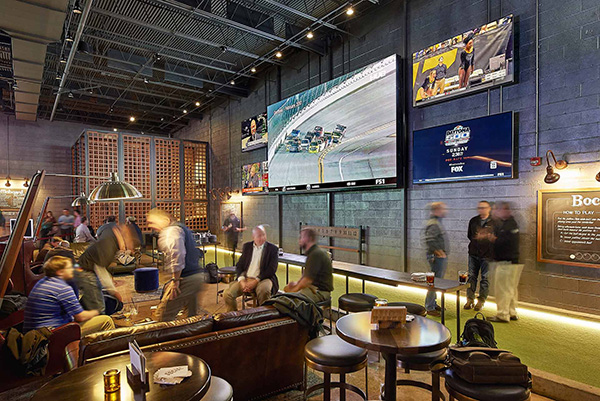How the Latest Audiovisual Technologies Are Reshaping Hospitality
It seems like everywhere you turn these days, there’s a big, bright video screen staring you in the face. While there are many amazing possibilities with sound, lighting, and control systems, displays continue to be the biggest attention grabber in any audiovisual installation. This is as true in the hospitality arena as everywhere else. Hotels, restaurants, and casinos, for example, are increasingly outfitted with walls loaded full of TVs and digital signage. This makes it hard to look anywhere else!
 The Westport Social
The Westport Social
Two trends are driving this move to install larger-than-life video displays. The first is a substantial decrease in the price of liquid-crystal display (LCD) screens, thanks to an expansion in manufacturing capacity in Asia and the construction of ever-larger display fabrication lines (a.k.a. “fabs”). As recently as 10 years ago, a 42-inch LCD screen was considered suitable for most installations, with 50- inch and 55-inch models marketed as “large” screens.
Today, bigger is better. The new normal is 55 to 60 inches, with 65 inches emerging as a popular size for both residential and commercial installations. The construction of next-generation fabs in Asia has made it possible to mass-produce display screens with sizes of 70, 75, 80, 85, and even 90+ inches that are practical for single installations or as part of a tiled videowall to achieve even larger images. It’s not a stretch to say that the sky’s the limit with screen size — if you can dream it, you can build it.
The second trend is the emergence of light-emitting diode (LED) displays. Once relegated to stadium scoreboards and static signboards in railroad stations and airports, a new generation of fine-pitch LED displays (<3 mm) is finding its way into the hospitality marketplace. These displays don’t look like the coarse, “big dot” products of old, but instead present fine detail, smooth video, and high dynamic range under indoor and outdoor lighting.



